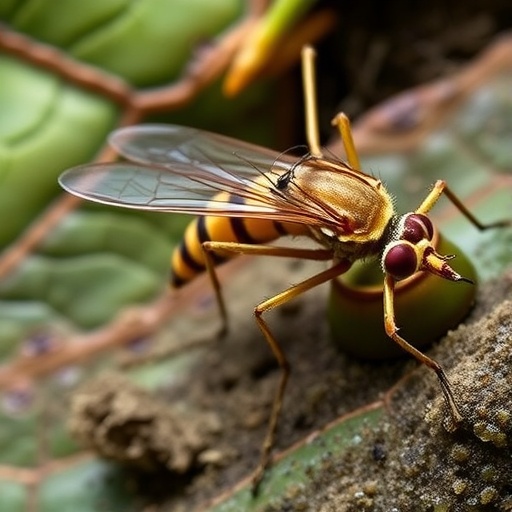
In a groundbreaking study published in BMC Genomics, a team of researchers led by Zatybekov and his colleagues has unveiled an intricate portrait of the genetic diversity found in soybean accessions originating from Kazakhstan. This research has elevated the understanding of soybean genetics, particularly in the context of global germplasm, through the innovative application of whole genome resequencing. By adopting an integrative approach, the team has successfully compared the unique genetic traits of Kazakhstani soybean varieties to their international counterparts, providing insights that could foster advancements in agricultural practices and crop improvement aims around the world.
The genetic landscape of crops is essential for developing varieties that can thrive in various environments and withstand challenges such as climate change and pests. Soybean, a critical crop in global agriculture, holds immense potential due to its nutritional value and role in sustainable agriculture, particularly as a source of protein and oil. The research emphasizes the necessity of understanding the genetic underpinnings of this species, especially from regions like Kazakhstan that offer a unique environmental setting.
Kazakhstan’s rich agricultural heritage and diverse ecosystems position it as a pivotal contributor to global biodiversity. The research team has harnessed whole genome resequencing technology to dissect and analyze the genetic material of soybean accessions from Kazakhstan. This method allows for the identification of variations and mutations in the genetic code that may influence traits such as yield, disease resistance, and adaptability to local conditions. The application of this technology not only provides a detailed genetic map of Kazakhstani soybeans but also situates these accessions within the broader context of global soybean diversity.
As part of their methodology, the researchers meticulously collected soybean samples from various regions across Kazakhstan, ensuring representation from different ecologies and climates. The comprehensive analysis began with extracting DNA from these samples, followed by the utilization of high-throughput sequencing techniques to obtain large amounts of genetic data. The sheer volume of data produced was then processed and analyzed using bioinformatics tools, allowing the team to identify critical genetic markers and patterns that distinguish Kazakhstani soybeans from those found in other major soybean-producing countries.
The results of this research are nothing short of enlightening. The comparative analysis revealed significant differences in genetic diversity between the Kazakhstani accessions and the global germplasm. Notably, this study highlights unique alleles that are not widely found in soybean varieties across other regions. These findings suggest that Kazakhstani soybean accessions carry untapped genetic resources that could be pivotal for breeding programs aimed at improving soybean resilience and productivity in challenging environments.
Furthermore, the implications of such genetic diversity extend beyond local agricultural practices. By integrating the unique traits of Kazakhstani soybeans into breeding programs, researchers can potentially develop hybrids that exhibit improved agronomic performance and greater adaptability to varying climatic conditions. This could be a game-changer, particularly in the context of global food security, as climate change continues to present significant challenges to crop production.
In a broader context, the research conducted by Zatybekov et al. illustrates the indispensable role of genomic research in contemporary agriculture. It serves as a reminder of the importance of preserving and examining local crop varieties. The study advocates for recognition of the agricultural capabilities of countries like Kazakhstan, reinforcing the notion that even regions less prominent in global agriculture may offer vital contributions to food production and sustainability.
The findings also underscore a critical avenue for future research. While the current study lays a solid foundation, further investigation into the functional characteristics of the identified genetic markers is necessary. Understanding how these markers operate and their influence on soybean traits could lead to more refined breeding strategies. This aspect of genomic research is crucial, as it allows for a more targeted selection of traits that can be incorporated into new soybean varieties.
In conclusion, the revelations from this study mark a significant step forward in the exploration of genetic resources in soybean. By uncovering the genetic landscape of Kazakhstan’s soybean accessions, the researchers have not only enhanced our understanding of the species but also highlighted the potential for local varieties to contribute to global agricultural objectives. As the world grapples with food security issues exacerbated by environmental challenges, the insights gained from this research could facilitate the breeding of more resilient and productive soybean varieties, thereby playing an essential role in ensuring a sustainable food future.
As this study garners attention in the scientific community and beyond, it encourages collaborations and exchanges among scientists, agronomists, and policy-makers. The promotion of such interdisciplinary efforts will be pivotal in advancing agricultural practices that leverage genetic diversity for the betterment of global food systems. This study stands as an inspiring example of how genomic research can illuminate pathways toward innovation in crop science and sustainable agriculture.
Subject of Research: Genetic landscape of soybean accessions from Kazakhstan
Article Title: Uncovering the genetic landscape of soybean accessions from Kazakhstan in comparison with global germplasm using whole genome resequencing
Article References:
Zatybekov, A., Genievskaya, Y., Fang, C. et al. Uncovering the genetic landscape of soybean accessions from Kazakhstan in comparison with global germplasm using whole genome resequencing.
BMC Genomics 26, 802 (2025). https://doi.org/10.1186/s12864-025-12024-8
Image Credits: AI Generated
DOI: 10.1186/s12864-025-12024-8
Keywords: Genetics, Soybean, Kazakhstan, Whole Genome Resequencing, Genetic Diversity, Agriculture, Crop Improvement, Food Security, Climate Adaptability.
Tags: agricultural biodiversity in Kazakhstanclimate change resilience in cropscrop improvement through geneticsglobal germplasm analysisintegrative approach to genetic researchKazakhstan soybean geneticsKazakhstani soybean varietiesnutritional value of soybeanprotein and oil sources in agriculturesoybean genetic diversity studysustainable agriculture advancementswhole genome sequencing in agriculture




